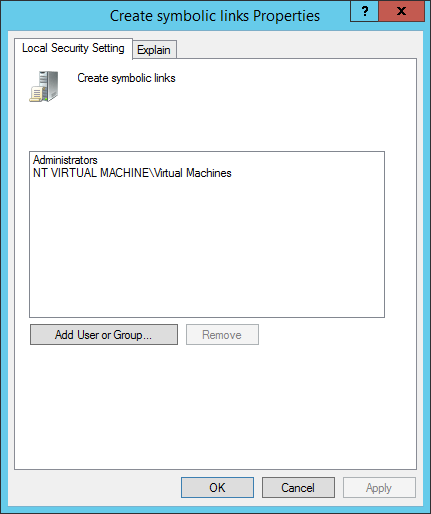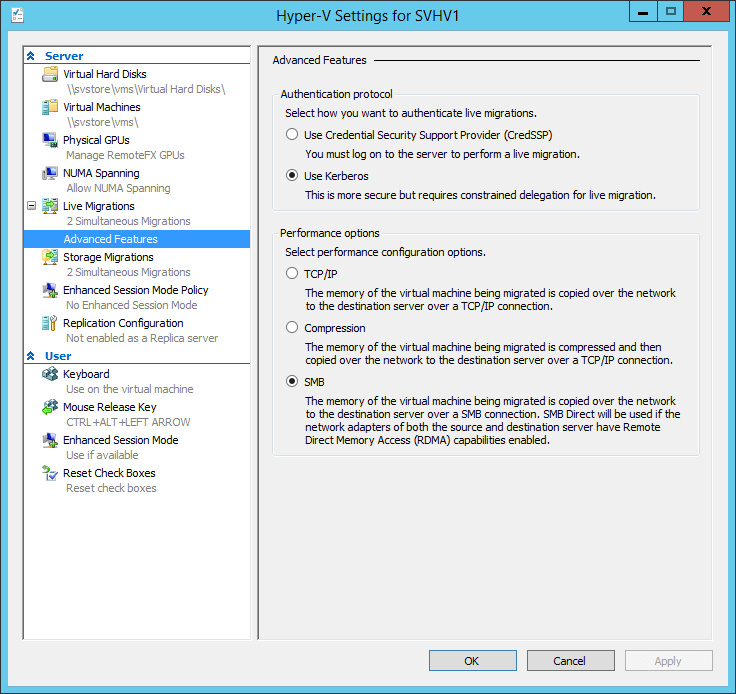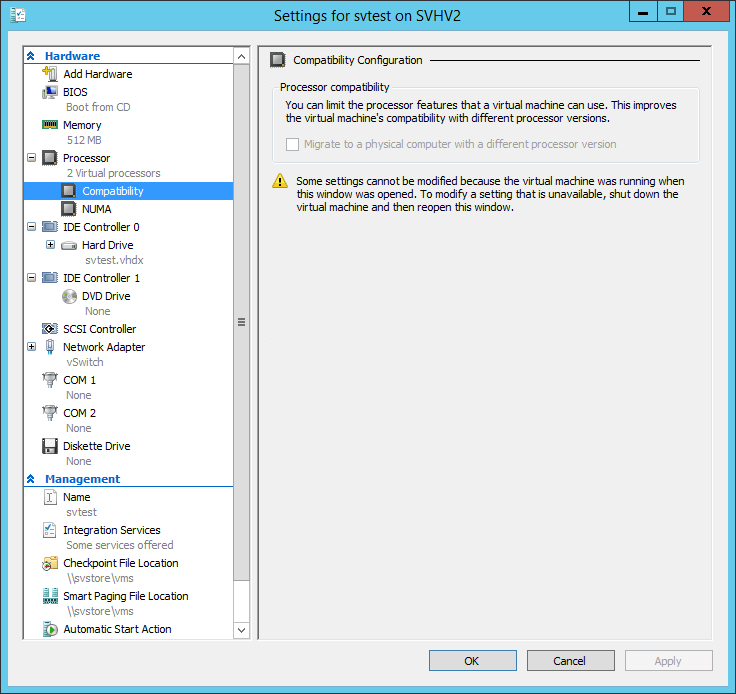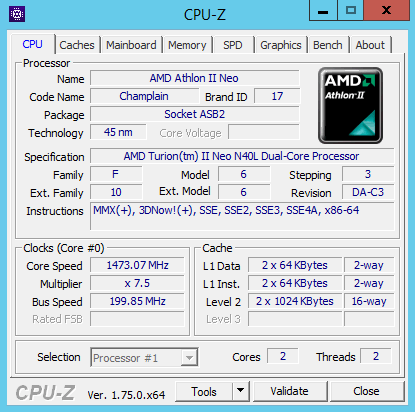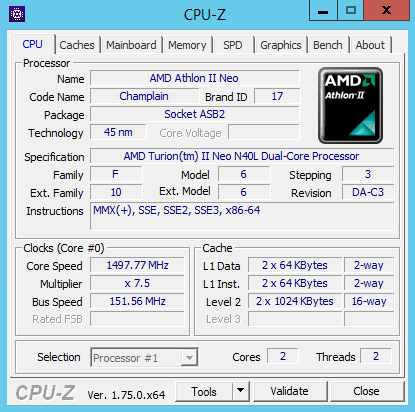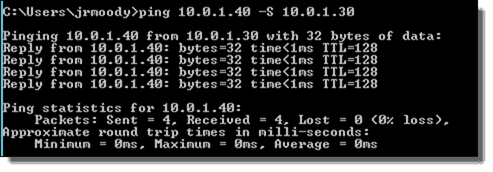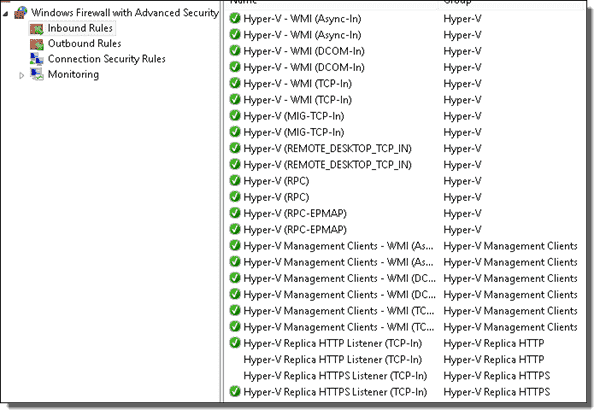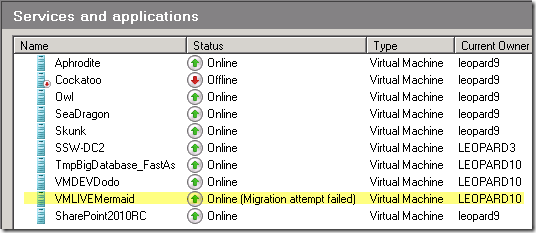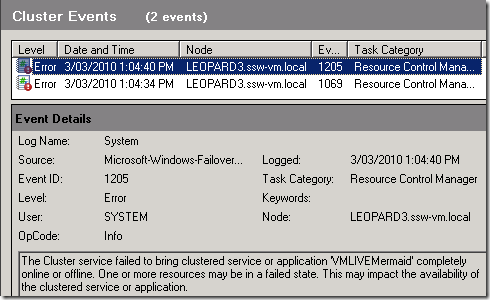As you saw in our earlier article that explained how Live Migration works, and how you can get it going in 2012 and 2012 R2, it is a process that requires a great deal of cooperation between source and target computer. It’s also a balancing act involving a great deal of security concerns. Failures within a cluster are uncommon, especially if the cluster has passed the validation wizard. Failures in Shared Nothing Live Migrations are more likely. Most issues are simple to isolate and troubleshoot.
General Troubleshooting
There are several known problem-causers that I can give you direct advice on. Some are less common. If you can’t find exactly what you’re looking for in this post, I can at least give you a starting point.
Migration-Related Event Log Entries
If you’re moving clustered virtual machines, the Cluster Events node in Failover Cluster Manager usually collects all the relevant events. If they’ve been reset or expired from that display, you can still use Event Viewer at these paths:
- Applications and Service LogsMicrosoftWindowsHyper-V-High-AvailabilityAdmin
- Applications and Service LogsMicrosoftWindowsHyper-V-VMMSAdmin
The “Hyper-V-High-Availability” tree usually has the better messages, although it has a few nearly useless ones, such as event ID 21111, “Live migration of ‘Virtual Machine VMName’ failed.” Most Live Migration errors come with one of three statements:
- Migration operation for VMName failed
- Live Migration did not succeed at the source
- Live Migration did not succeed at the destination
These will usually, but not always, be accompanied by supporting text that further describes the problem. “Source” messages often mean that the problem is so bad and obvious that Hyper-V can’t even attempt to move the virtual machine. These usually have the most helpful accompanying text. “Destination” messages usually mean that either there is a configuration mismatch that prevents migration or the problem did not surface until the migration was either underway or nearly completed. You might find that these have no additional information or that what is given is not very helpful. In that case, specifically check for permissions issues and that the destination host isn’t having problems accessing the virtual machine’s storage.
Inability to Create Symbolic Links
As we talked about each virtual machine migration method in our explanatory article, part of the process is for the target host to create a symbolic link in C:ProgramDataMicrosoftWindowsHyper-VVirtual Machines. This occurs under a special built-in credential named NT Virtual MachineVirtual Machines, which has a “well-known” (read as: always the same) security identifier (SID) of S-1-5-83-0.
Some attempts to harden Hyper-V result in a policy being assigned from the domain involve only granting the Computer ConfigurationWindows SettingsSecurity SettingsLocal PoliciesUser Rights AssignmentCreate symbolic links right to the built-in Administrators account. Doing so will certainly cause Live Migrations to fail and can sometimes cause other virtual machine creation events to fail.
Your best option is to just not tinker with this branch of group policy. I haven’t ever even heard of an attack mitigated by trying to improve on the contents of this area. If you simply must override it from the domain, then add in an entry in your group policy for it. You can just type in the full name as shown in the first paragraph of this section.
Create Symbolic Link
Note: The “Run as a Service” right must also be assigned to the same account. Not having that right usually causes more severe problems than Live Migration issues, but it’s mentioned here for completeness.
Inability to Perform Actions on Remote Computers
Live Migration and Shared Nothing Live Migration invariably involves two computers at minimum. If you’re sitting at your personal computer with a Failover Cluster Manager or PowerShell open, telling Host A to migrate a virtual machine to Host B, that’s three computers that are involved. Most Access Denied errors during Live Migrations involve this multi-computer problem.
Solution 1: CredSSP
CredSSP is kind of a terrible thing. It allows one computer to store the credentials for a user or computer and then use them on a second computer. It’s sort of like cached credentials, only transmitted over the network. It’s not overly insecure, but it’s also not something that security officers are overly fond of. You can set this option on the Authentication protocol section of the Advanced Features section of the Live Migration configuration area on the Hyper-V Settings dialog.
Live Migration Advanced Settings
CredSSP has the following cons:
- Not as secure as Kerberos
- Only works when logged in directly to the source host
CredSSP has only one pro: You don’t have to configure delegation. My preference? Configure delegation.
Solution 2: Delegation
Delegation can be a bit of a pain to configure, but in the long-term it is worth it. Delegation allows one computer to pass on Kerberos tickets to other computers. It doesn’t have CredSSP’s hop limit; computers can continue passing credentials on to any computer that they’re allowed to delegate to as far as is necessary.
Delegation has the following cons:
- It can be tedious to configure.
- If not done thoughtfully, can needlessly expose your environment to security risks.
Delegation’s major pro is that as long as you can successfully authenticate to one host that can delegate, you can use it to Live Migrate to or from any host it has delegation authority for.
As far as the “thoughtfulness”, the first step is to use Constrained Delegation. It is possible to allow a computer to pass on credentials for any purpose, but it’s unnecessary.
Delegation is done using Active Directory Users and Computers or PowerShell. I have written an article that explains both ways and includes a full PowerShell script to make this much easier for multiple machines.
Be aware that delegation is not necessary for Quick or Live Migrations between nodes of the same cluster.
Mismatched Physical CPUs
Since you’re taking active threads and relocating them to a CPU in another computer, it seems only reasonable that the target CPU must have the same instruction set as the source. If it doesn’t, the migration will fail. There are hard and soft versions of this story. If the CPUs are from different manufacturers, that’s a hard stop. Live Migration is not possible. If the CPUs are from the same manufacturer, that could be a soft problem. Use CPU compatibility mode:
CPU Compatibility
As shown in the screenshot, the virtual machine needs to be turned off to change this setting.
A very common question is: What are the effects of CPU compatibility mode? For almost every standard server usage, the answer is: none. Every CPU from a manufacturer has a common core set of available instructions and usually a few common extensions. Then, they have extra function sets. Applications can query the CPU for its CPUID information, which contains information about its available function sets. When the compatibility mode box is checked, all of those extra sets are hidden; the virtual machine and its applications can only see the common instruction sets. These extensions are usually related to graphics processing and are almost never used by any server software. So, VDI installations might have trouble when enabling this setting, but virtualized server environments usually will not.
This screenshot was taken from a virtual machine with compatibility disabled using CPU-Z software:
CPU Compatibility Off
The following screen shot shows the same virtual machine with no change made except the enabling of compatibility mode:
CPU Compatibility On
Notice how many things are the same and what is missing from the Instructions section.
Insufficient Resources
If the target system cannot satisfy the memory or disk space requirements of the virtual machine, any migration type will fail. These errors are usually very specific about what isn’t available.
Virtual Switch Name Mismatch
The virtual machine must be able to connect its virtual adapter(s) to a switch(es) with the same name. Furthermore, a clustered virtual machine cannot move if it is using an internal or private virtual switch, even if the target host has a switch with the same name.
If it’s a simple problem with a name mismatch, you can use Compare-VM to overcome the problem while still performing a Live Migration. The basic process is to use Compare-VM to generate a report, then pass that report to Move-VM. Luke Orellan has written an article explaining the basics of using Compare-VM. If you need to make other changes, such as where the files are stored, notice that Compare-VM has all of those parameters. If you use a report from Compare-VM with Move-VM, you cannot supply any other parameters to Move-VM.
Live Migration Error 0x8007274C
This is a very common error in Live Migration that always traced to network problems. If the source and destination hosts are in the same cluster, start by running the Cluster Validation Wizard, only specifying the network tests. That might tell you right away what the problem is. Other possibilities:
- Broken or not completely attached cables
- Physical adapter failures
- Physical switch failures
- Switches with different configurations
- Teams with different configurations
- VMQ errors
- Jumbo frame misconfiguration
If the problem is intermittent, check teaming configurations first; one pathway might be clear while another has a problem.
Storage Connectivity Problems
A maddening cause for some “Live Migration did not succeed at the destination” messages is a problem with storage connectivity. These aren’t always obvious, because everything might appear to be in order. Do any independent testing that you can. Specifically:
- If the virtual machine is placed on SMB 3 storage, double-check that the target host has Full Control on the SMB 3 share and the backing NTFS locations. If possible, remove and re-add the host.
- If the virtual machine is placed on iSCSI or remote Fibre Channel storage, double-check that it can work with files in that location. iSCSI connections sometimes fail silently. Try disconnecting and reconnecting to the target LUN. A reboot might be required.
Live migration in Hyper-V 2012 R2 and SCVMM 2012 R2 relies on several technologies and many specific settings. This guide will cover the most common misconfigurations and how to fix them.
- Author
- Recent Posts
For the most part, live migrations in Hyper-V or System Center Virtual Machine Manager (SCVMM) work flawlessly. However, if you are reading this article, your live migrations probably are not going so smoothly. Understanding where the live migration is breaking down is key to troubleshooting the issue quickly. We will start this guide with the actual live migration settings and work our way through common server breakdowns.
Issues with live migration occur mainly because of server misconfigurations but can also result from networking issues. To simplify the networking aspect and to make troubleshooting easier, you can connect two Hyper-V hosts directly and bypass these issues.
The destination computer is not configured to send or receive live migrations of virtual machines.
Start by checking your Hyper-V live migration settings on the source and destination hosts. When these options are left as unconfigured, you may receive an error message stating that the destination computer is not configured to send or receive live migrations of virtual machines.
In Hyper-V Manager, right-click your host, select Hyper-V Settings, and select the Live Migrations option.
Live migration settings in Hyper-V 2012 R2
Ensure that Enable incoming and outgoing live migrations is checked. Incoming live migrations, by default, use any available network. For performance and security purposes, many administrators will segment live migration traffic to a dedicated network. If your Hyper-V hosts are configured this way, test the connection between hosts on that network. You can use the –S parameter in the ping command to specify a source address.
Testing a network connection in the live migration network
The source host will occasionally report that an error occurred while attempting to contact the Virtual Machine Management service on the destination computer. Ensure that every automatic service is started on both the source and the destination hosts. Specifically, check that the Hyper-V Virtual Machine Management service and the Remote Procedure Call (RPC) service are running. For SCVMM-managed machines, check the System Center Virtual Machine Manager Agent service as well.
Failed to establish a connection with host. No credentials are available in the security package.
Our error here is directly related to an authentication failure. Unfortunately, the issue can be an incorrect authentication protocol setting or improper delegation.
Hyper-V/SCVMM gives you two authentication protocol options: CredSSP and Kerberos. In most cases, you will want to use Kerberos because it allows for broader live migration configurations. This does require that all of your Hyper-V hosts be a part of a domain.
Kerberos selected as the live migration authentication protocol
Using Kerberos requires that you first properly configure constrained delegation. Launch Active Directory Users and Computers. Open the properties of your Hyper-V host computer account and select the Delegation tab.
Select the Trust this computer for delegation to specified services only option, select Use Kerberos only, and click Add. Locate the destination computer if you are using Hyper-V. Add the CIFS service and the Microsoft Virtual System Migration service. Do this on each host, and add every potential destination server.
Configuring constrained delegation on a Hyper-V host account
If you are using SCVMM, you only need to add the SCVMM service account and the CIFS service to each host. You can read all about this particular configuration from TechNet.
The virtual machine cannot be moved to the destination computer.
A rather frustrating error is the generic The virtual machine cannot be moved to the destination computer. This error occurs in both Hyper-V and SCVMM initiated migrations. It has haunted me on several occasions.
At its root, the error points to incompatible hardware configurations across both host servers. In most cases, this is due to different processor types (more specifically, different features between processors being presented to the VM for use). This error can pop up even when processors on both servers are the same make.
To resolve this error, you first have to shut down the VM (which rather removes the benefit of live migration in the first place). Then, you can enable processor compatibility by opening the VM’s properties and navigating to the Processor hardware configuration. The screenshot below shows the Allow migration to a virtual machine host with a different processor version setting in SCVMM.
“Allow migration” box grayed out because VM is not turned off
Very rarely, this error is related to misconfigurations in the vNIC and can be resolved by removing and reinstalling the vNIC hardware. Finally, some report success with live migrations by restarting the destination host and not changing compatibility options.
Hyper-V settings that can break live migrations
The Windows Firewall can also block live migration connections if the default rules are modified or overwritten. Double-check these settings; the Hyper-V and Hyper-V Management Clients rule groups should be enabled on the Hyper-V host servers.
Hyper-V firewall rules in Windows Server 2012 R2
Two common issues with Hyper-V settings occur when resources on the Hyper-V host change during the migration process. If the VM migration starts successfully but fails during the process, you may see this error: There Was an Error During the Move Operation.
The first possible cause occurs when the host is not accounting for changes in memory usage during the migration process. When a host has several VMs that use dynamic memory, a running VM may consume more memory than is available for the running VMs plus the migrated VM. If memory usage is too high, reduce the minimal startup memory for the new VM or the maximum memory for running VMs, or add additional memory to the host.
The second possible cause occurs when the virtual hard disk is migrated but a network outage prevents the live migration from finishing. At this point, you may see an offline VM on the destination host and an online VM on the source host. In SCVMM, you can resolve this inconsistent state by restarting the live migration job. You can also resolve this manually by disconnecting the NIC on the source VM and then starting the new destination VM. When the destination VM is running and operating smoothly, destroy the source VM.
This wraps up our live migration troubleshooting guide for Hyper-V and SCVMM. If you have additional information to add to any of these problems, leave a comment below. If your problem wasn’t addressed, let me know by leaving a question below.
- Remove From My Forums
-
Question
-
Server 2016 Datacenter w/Hyper-V role. No cluster, just direct attached storage.
Live Migration is enabled in Hyper-V settings:
- any available network
- using CredSSP
Attempting to migrate a VM from drive D: to drive C: on same host using Hyper-V Manager Move. After the wizard completes, a popup error occurs:
In Hyper-V-VMMS event log, there is the following entry:
Log Name: Microsoft-Windows-Hyper-V-VMMS-Admin
Source: Microsoft-Windows-Hyper-V-VMMS
Date: 5/18/2017 12:38:52 PM
Event ID: 20923
Task Category: None
Level: Error
Keywords:
User: SYSTEM
Computer: myhypervhost.mydomain.com
Description:
Blocked a migration operation for virtual machine ‘DEV_ZVR-W’ because the host is not configured for the migration operation (virtual machine ID 6697C9B1-0089-48B3-87ED-D538845A7EE7).
Event Xml:
<Event xmlns=»http://schemas.microsoft.com/win/2004/08/events/event»>
<System>
<Provider Name=»Microsoft-Windows-Hyper-V-VMMS» Guid=»{6066F867-7CA1-4418-85FD-36E3F9C0600C}» />
<EventID>20923</EventID>
<Version>0</Version>
<Level>2</Level>
<Task>0</Task>
<Opcode>0</Opcode>
<Keywords>0x8000000000000000</Keywords>
<TimeCreated SystemTime=»2017-05-18T16:38:52.481432000Z» />
<EventRecordID>864</EventRecordID>
<Correlation />
<Execution ProcessID=»3288″ ThreadID=»8988″ />
<Channel>Microsoft-Windows-Hyper-V-VMMS-Admin</Channel>
<Computer>myhypervhost.mydomain.com</Computer>
<Security UserID=»S-1-5-18″ />
</System>
<UserData>
<VmlEventLog xmlns=»http://www.microsoft.com/Windows/Virtualization/Events»>
<Parameter0>DEV_ZVR-W</Parameter0>
<Parameter1>6697C9B1-0089-48B3-87ED-D538845A7EE7</Parameter1>
</VmlEventLog>
</UserData>
</Event>What does it mean by «not supported» and «host is not configured for the migration operation»?
-
Edited by
Thursday, May 18, 2017 4:56 PM
Answers
-
Hi,
That means that you cannot Live migrate/move VM where source and destination host is the same hyper-v host.
To accomplish that what you are trying to do, you will need to choose second option Move the virtual machine’s storage
————————————————————————————————————
If you found this post helpful, please give it a «Helpful» vote.
Please remember to mark the replies as answers if they help.nedimmehic.org
-
Edited by
Nedim Mehic
Wednesday, May 31, 2017 8:17 AM -
Proposed as answer by
Alvwan
Thursday, June 1, 2017 6:31 AM -
Marked as answer by
TG99
Thursday, June 1, 2017 2:37 PM
-
Edited by
If you are running Windows Server 2008 R2 with Hyper-V and have a SAN available, Hyper-V Live migration is a great way to make your Virtual Machines highly available. There is nothing like being able to migrate your VM’s to another node in the cluster and shutdown a host to perform maintenance – I still get excited every time I live migrate a machine!
In some cases though, your Live Migration attempt may fail. Unfortunately the Failover Cluster Manager nor the event viewer sheds much light on the reason in most cases.
To troubleshoot a problem with virtual no error message is difficult, and my process was to do a Google on the event log error and try my luck with the different forum posts from the TechNet Forums and other such sites. For this reason I decided to make a checklist to go through to try and work out the reason behind the failed live migration. Good luck!
- The ‘None Of My Hyper-V Servers Are Live Migrating’ Checklist
- The ‘Migration Attempt Failed but other VM’s migrate fine’ Checklist
The ‘None Of My Hyper-V Servers Are Live Migrating’ Checklist
- In the Failover Cluster Manager do your clustered networks have a status of
Up? - Do you have enough RAM free on the server you are trying to Live Migrate to? The best way to check this is System Center Virtual Machine Manager. If you do not have this, checking task manager on the destination server will show you how much RAM you have free.
- In the Failover Cluster Manager do your Clustered Shared Volume(s) has a status of
Online? - In the Failover Cluster Manager do your clustered Storage volumes have a status of
Online? - Are you able to ping the node you are trying to Live Migrate to and visa-versa?
- Did you create the Hyper-V network adapters before creating a cluster? If not you should destroy your cluster and start again reading the Microsoft guide Using Hyper-V and Failover Clustering
- Are the names of your Hyper-V Virtual Adapters all the same?
The ‘Migration Attempt Failed but other VM’s migrate fine’ Checklist
These step is meant for people that are having a single Virtual Machine failing to Live Migrate for example; VM1 and VM2 are hosted on NODE1. VM1 is successfully Live Migrated to NODE2 but VM2 says Migration Attempt Failed.
- Make sure no CD/DVD or image file is mounted in the Virtual Machine you are trying to migrate.
- Reset the permission on the folder on the SAN that your Virtual Machine resides in to Everyone has full permission (this is not a security issue as the SAN network should be on a separate IP to your workstations and only Hyper-V administrators should have permission to access the cluster and its nodes)
- This is a weird one: Do you have any notes in the
Namefield under the Management section of the settings for the Virtual Machine? If so remove it and try Live Migration again. I personally have had this issue and removing the notes in here (that I never entered) worked.
- If you have Anti-Virus software installed on one of your nodes, ensure it is set not to scan the
C:ClusterStoragefolder
Hopefully using these checklists assists you in fixing your Hyper-V Live Migration problems. I will endeavour to update this list as I discover more reasons that Live Migration might fail.

